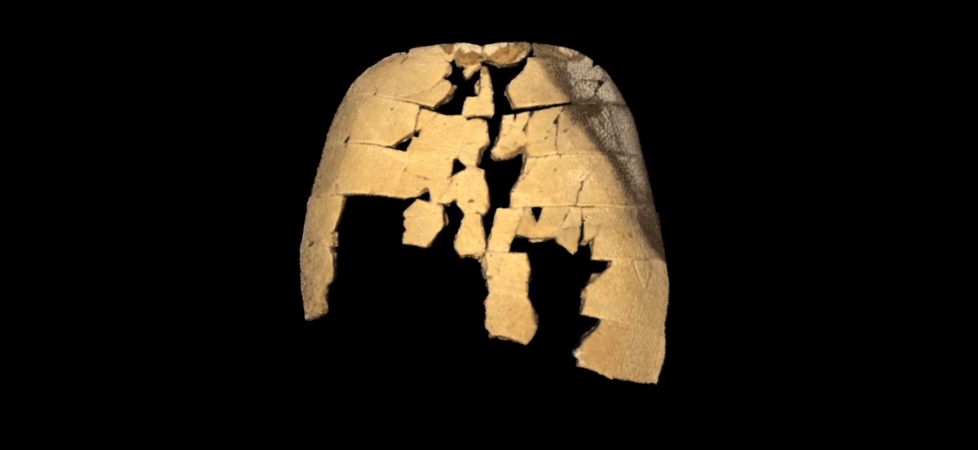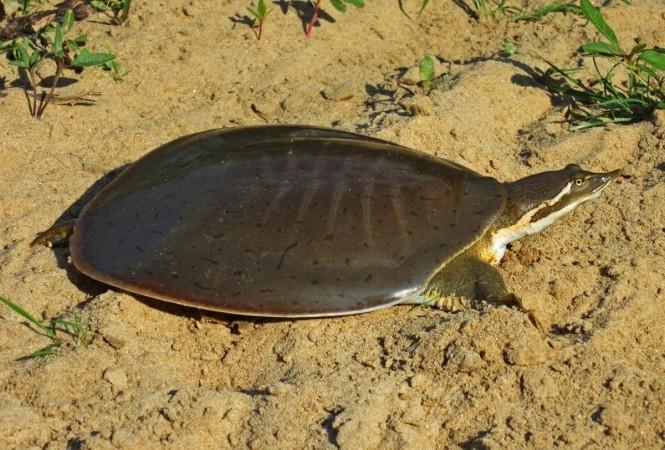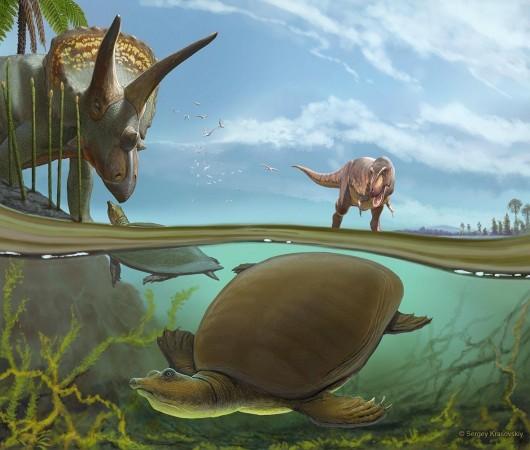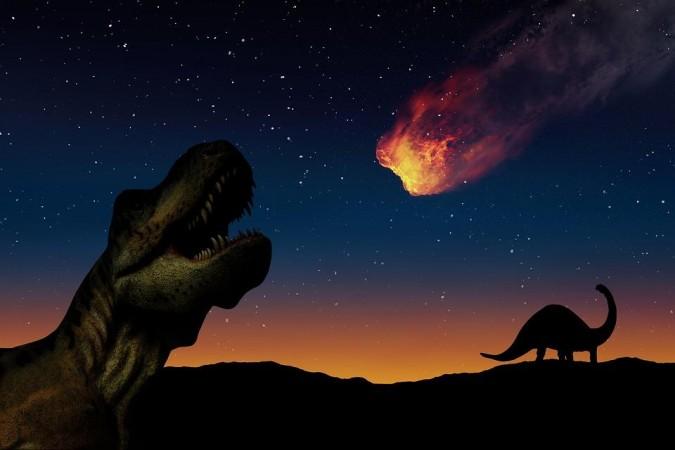Which are the dinosaurs that come to your mind when one mentions these gigantic reptiles? The fearsome Tyrannosaurus rex? Or the majestic Triceratops? Thanks to Hollywood, these two species enjoy much fanfare. However, it is important to remember that several equally unique creatures existed alongside them. Now, scientists have described a new species of softshell turtle that lived in the same era as these two dinosaurs did.
In a new multi-institutional study, researchers have identified a softshell turtle—Hutchemys walkerorum—that lived in what is modern-day North Dakota, around 66.5 million years ago. This puts its existence at the end of the Cretaceous Period, shortly before the mass extinction event during the Late Cretaceous period (around 100 to 66 million years ago). The finding provides a broader understanding of softshell turtles; including the effect of the extinction event on their evolution.
"Until recently we didn't understand these softshell turtles very well. However, we are starting to get more information on this extinct group of turtles and further understanding their evolution, including how they dealt with the mass extinction," said Dr. Steven Jasinski, lead author of the study, in a statement. The research was published in the journal Cretaceous Research.
A Late Start

The new species' fossil specimen was discovered in 1975 in southwestern North Dakota. It consisted of a partial carapace: the bones that cover a turtle's back and which are commonly referred to as its 'shell'. The specimen was housed at Appalachian State University until 2013. However, research into the fossil began in all earnestness only around that time.
It was carried forward after Dr. Frank K. McKinney, co-leader of the group that unearthed the fossil, discussed about it with Jasinski, who was a doctoral student at the University of Pennsylvania at the time. On the basis of the specimen's structure, the researchers established that it belonged to the genus Hutchemys (a genus of turtles that lived millions of years ago in the areas that form today's American West ).
Similar to Modern Counterparts
The newly-described turtle belongs to an extinct group of softshell turtles known as plastomenines within the Trionychidae family. They thrived during the Cretaceous and Paleogene periods (about 80 to 50 million years ago). In fossil records, Plastomenines make their first appearance during the Late Cretaceous period (around 100 to 66 million years ago).

Among them, a single species—Plastomenus thomasii—continues well into the Eocene Epoch (about 50 million years ago). However, their diversity is at its peak before and after the Cretaceous-Paleogene boundary (approximately 67 million years ago).
Anatomically, plastomenines were similar to modern-day softshell turtles in several ways. However, their plastron—the bones encasing the abdominal and stomach area—were bound together more firmly. The plastron of plastomenine turtles was mostly much bigger and stronger than it is in other species of softshell turtles.
New Insights Into Origin
A phylogenetic analysis—comparing H. walkerorum with other trionychids (softshell turtles)—provided the team with improved insights into the evolutionary relationships within the group. Their examination revealed that H. walkerorum could be placed with other recognized species Hutchemys. The analysis also positioned the newly-identified species with numerous other turtles forming a distinctive group of plastomenines; the group was named Plastomenini by the authors.

Additionally, the scientists also found a group of early trionychids and placed them in a newly-instituted subfamily called Kuhnemydinae, which consists of fossil species from Asia. According to the researchers' investigation, it is likely that the family Trionychidae originated in Asia and migrated to North America during the Late Cretaceous.
The authors' analysis also led to the formation of a new classification within the Trionychidae family: a subfamily called Chitrainae. The newly-formed group comprises all modern softshell turtles. This includes narrow-headed and giant softshell turtles such as the Asian giant softshell turtle (Pelochelys cantorii) found in southern Asia.
Predating Mass Extinction Event
Interestingly, H. walkerorum serves as a rare occurrence of Hutchemys before the mass extinction event that led to the end of the 'Age of Dinosaurs'. In addition to this, H. walkerorum also acts as the easternmost occurrence of Hutchemys during the Cretaceous Period.

"With this study we gain further insight into winners and losers during the cataclysm that ended the Age of Dinosaurs. The mighty dinosaurs fell, and the lowly turtle survived," said Dr. Peter Dodson, co-author of the study.
The name of the species, walkerorum, is in honour of Greg and Susan Walker, who established 'The Greg and Susan Walker Endowment' in 2006. Students at the University of Pennsylvania's Department of Earth and Environmental Science (EES)—under the terms of the endowment—can seek funds to conduct research if no sources of funding are available immediately.
Expressing his gratitude, Dr. Jasinski stated, "The Walkers' generous support helped me get the most out of my time while at Penn and I know they were vital to the research of other students as well. This was one of the major reasons we wanted to name this new species in their honor."

















